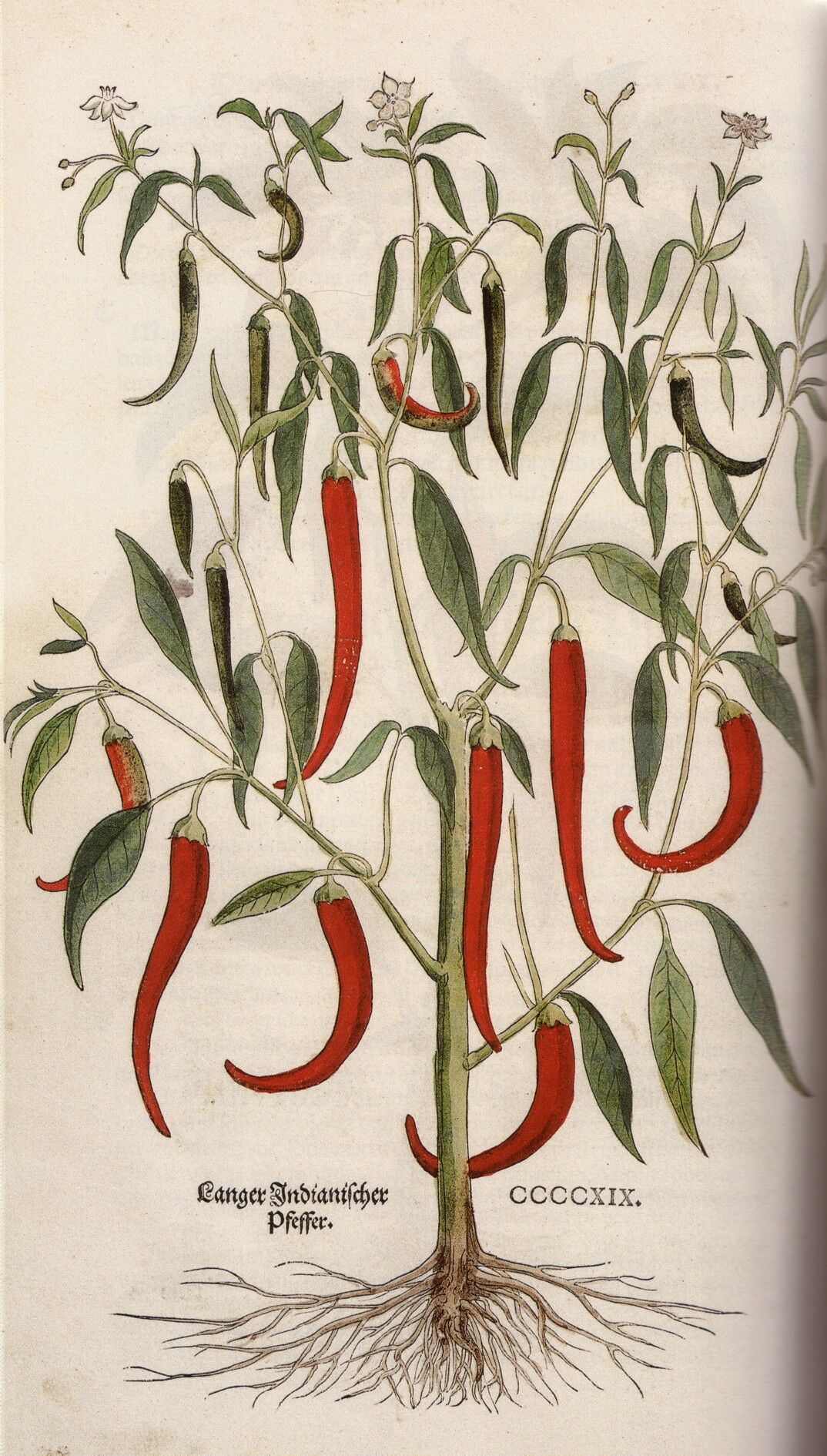At first western contact, there were three predominant chili peppers being grown across the Americas – Capsicum annuum (Cayenne, Bell and Jalapeño peppers), C. frutescens (Tabasco) and C. chinense (Habanero). Capsicum annuum was domesticated in Mesoamerica, while C. frutescens and C. chinense were domesticated in western Amazonia.
The diffusion of Capsicum peppers after their European discovery was fast and broad, initiating a culinary revolution from Asia to Europe. Janick (2013 – pg. 47) suggests that “because Columbus was looking for black pepper, the discovery of the even more pungent fruits of various species of Capsicum led to their immediate acceptance and popularity throughout the world, particularly in Asia and China where they became an important part of their cuisine.” The peppers were particularly well adapted to dispersal by traders – they were dried, making them easy to transport, and their seeds remained viable for long periods of time.
The Portuguese distributed chili peppers to Africa through the slave trade. Africans had been liberally using their own native “melequeta peppers”, an unrelated ginger species, so chili pepper adoption came quickly. By the time the British took over dominance of the slave trade in the 1600s, “American peppers had become so important to Africans that their British captors included them among the staples on their slave vessels” (Andrews, 1992). Evidence suggests that the Portuguese started growing pepper and maize very early in the Azores and Madeira as well as Guinea and Angola.
From Portuguese Africa, the capsicums were soon taken to the colonies in India. Chili peppers were known in Goa by the middle of the sixteenth century as “Pernambuco pepper”, named after the Portuguese colony in Brazil. The Flemish botanist Matthias de Lobel noted in 1576, that capsicums had been brought to Goa and Calicut at a very early date. The new spice was rapidly welcomed by Indian cooks who, accustomed to pungent black pepper and biting ginger, produced hot, spicy foods using them. In South and Southeast Asia, curry made with chili pepper and other spices became widely used as a base of almost every dish. Chili peppers arrived so soon in Asia that centuries later Europeans thought they had originated in the Orient.
The New World Capsicums were introduced to the West Indies by 1540, by either the Portuguese themselves or by Arab or Gujarati traders. By 1569, they were also being grown in eastern Europe and the Balkans, probably introduced through Turkey from the Portuguese West African colonies by way of India. In Hungary, paprika, made from grinding dried fruits of the capsicum pepper, became widely adopted in a wide variety of dishes, including goulash.
Peppers also arrived in China in the early 1500s. Crosby in The Columbian Exchange observed that “no large group of the human race in the Old World was quicker to adopt American food plants than the Chinese” (1972 – pg. 199). Peppers likely got to China by multiple routes including the Silk Roads leading from India, the Portuguese trading colony in Macao and other Chinese contacts with the Portuguese throughout Southeast Asia.
Illustration: The first European illustration of peppers from the 1542 book of Leonhart Fuchs – “De historia stirpium commentarii insignes”.
Bibliography:
Andrews, J. (1993) Diffusion of Mesoamerican Food Complex to Southeastern Europe Geographical Review 83(2): 194-204
Crosby, A.W. (1972) The Columbian exchange: Biological and cultural consequences of 1492. Greenwood Press, Westport, CT.
Hancock, J. F. (2022) World Agriculture before and after 1492: Legacy of the Columbian Exchange. Springer
Janick, J. (2013) Development of new world crops by indigenous Americans. HortScience 48 (4): 406-412.
